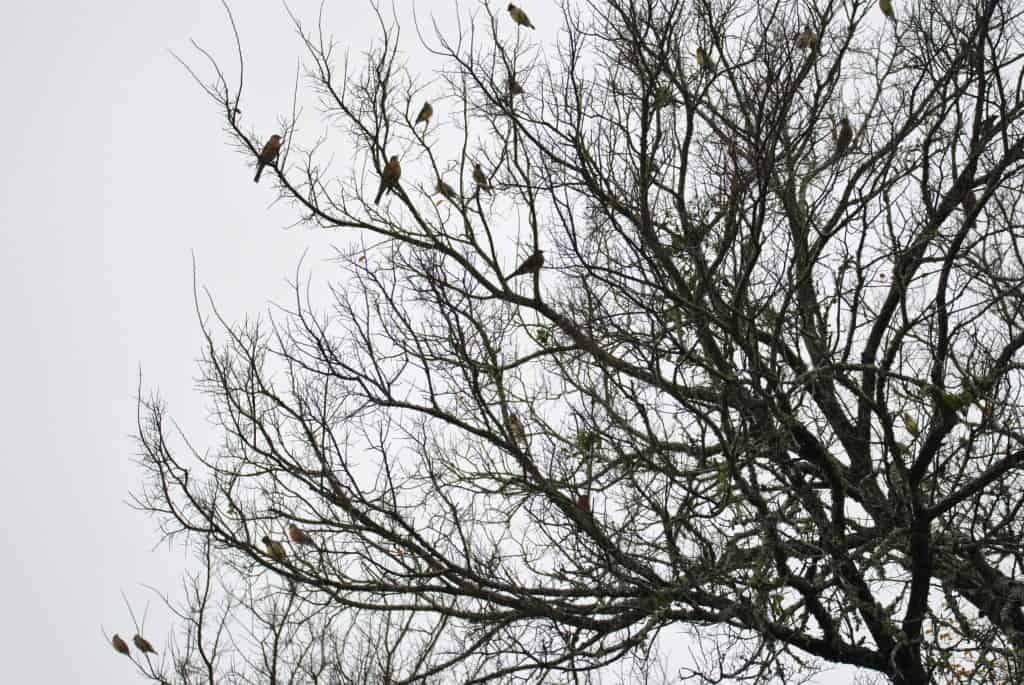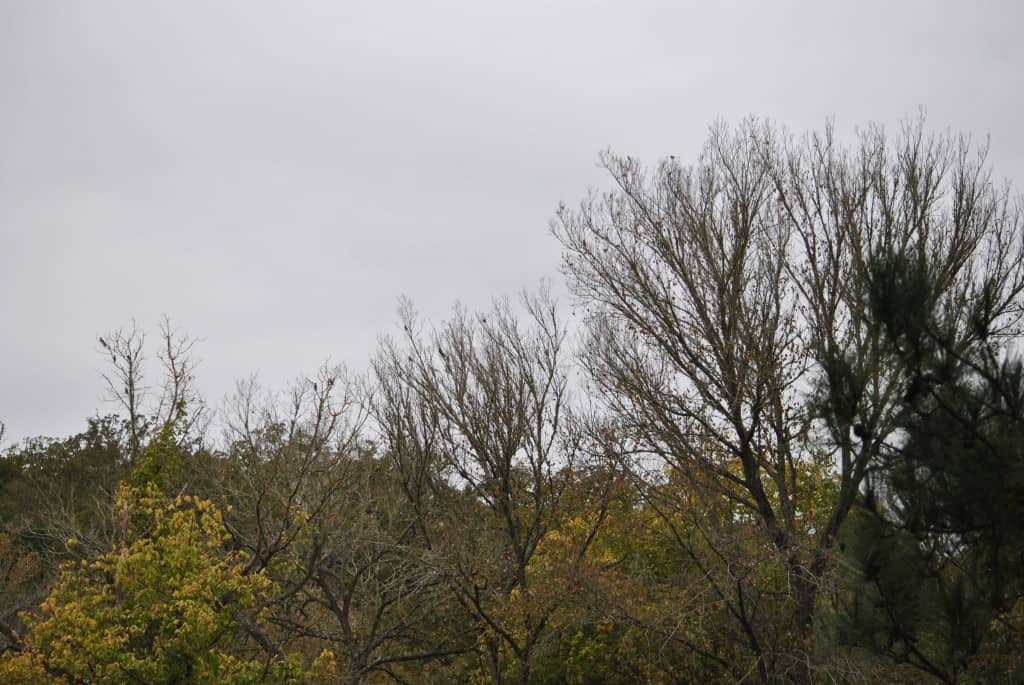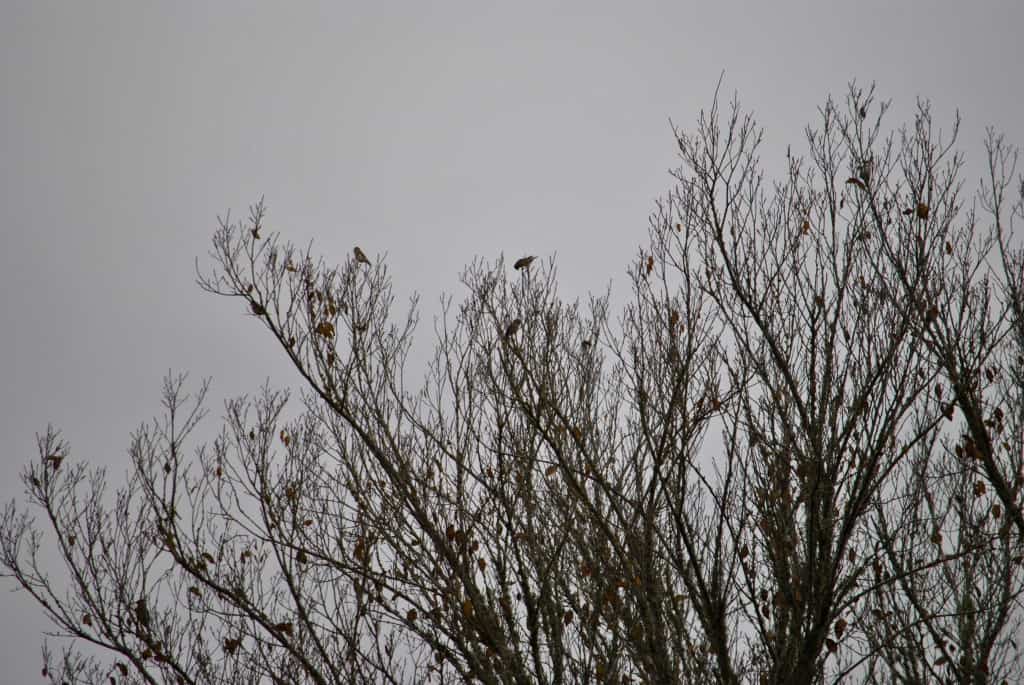Mixed Flocks Return
Cool weather brings a return of “mixed flocks” to Little Piney. Fast moving, noisy, and often in the treetops, a mixed flock is a real challenge to identify and count. When a cloud of dark silhouettes descends on bare branches, chipping and flitting from branch to branch I’d better have my camera ready if I want to know what they are and how many. In the excitement and activity I find myself counting and recounting even as the flock moves on.
Mixed flocks, or “mixed-species feeding flocks” form for reasons of safety and/or improved foraging. Species known as “leaders” are usually larger and more vigilant birds. Smaller or more vulnerable birds who join the flock are known as “followers”; they are likely to benefit the most from the arrangement because of longer opportunities to forage. Other species may trail the “nuclear” mixed flock without overlapping in territory; these species are known as “attendants” and may be lower in the pecking order.
I’ve seen several mixed flocks in the last few weeks at Little Piney. Three times I’ve seen Robins and Cedar Wax Wings, once Cedar Wax Wings with Yellow-rumped Warblers. Other birds I often see together are Titmice, Chickadees, and Cardinals, but I’m not sure whether they are actually mixed flocks or just good neighbors who share trees and feeders. I’ll be keeping an eye on the flocks at Little Piney, and trying to learn more about them.
Mixed Flock Photos

In the photograph below, it is hard to tell the birds from the leaves. If you zoom in you will see Cedar Waxwings on the left overlapping with Yellow-rumped Warblers on the right.

Here is a closer view of a Cedar Waxwing on the lower left with many Yellow-rumps to the right.
